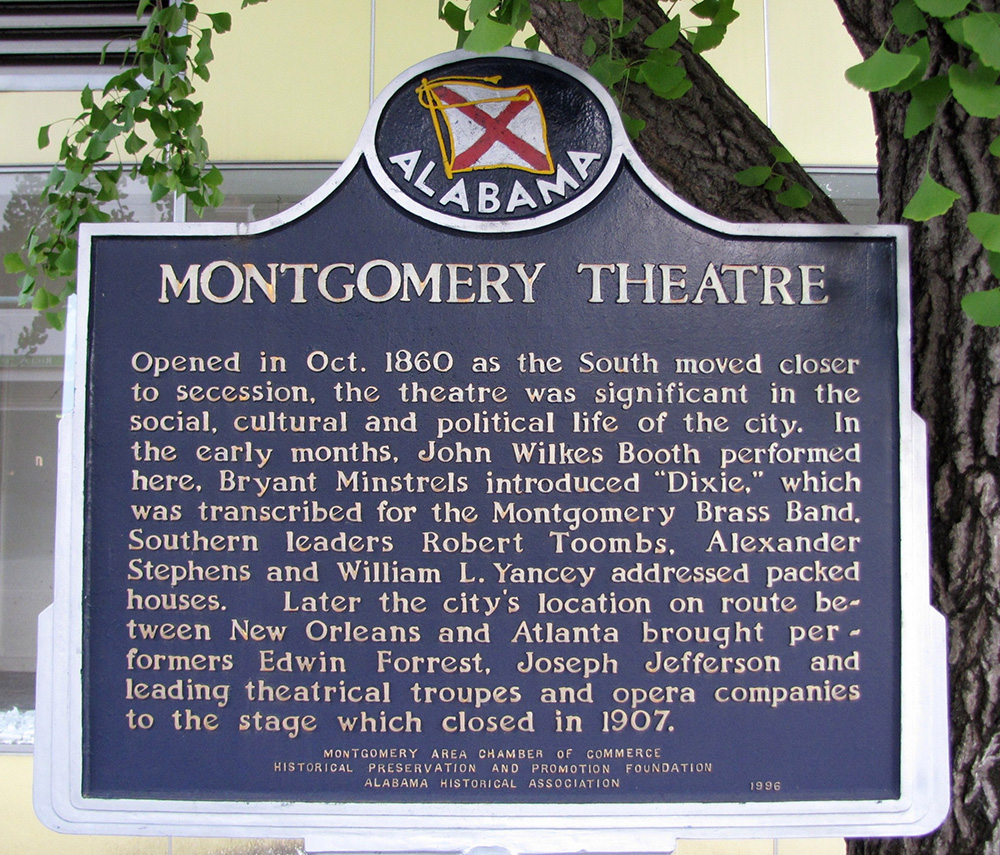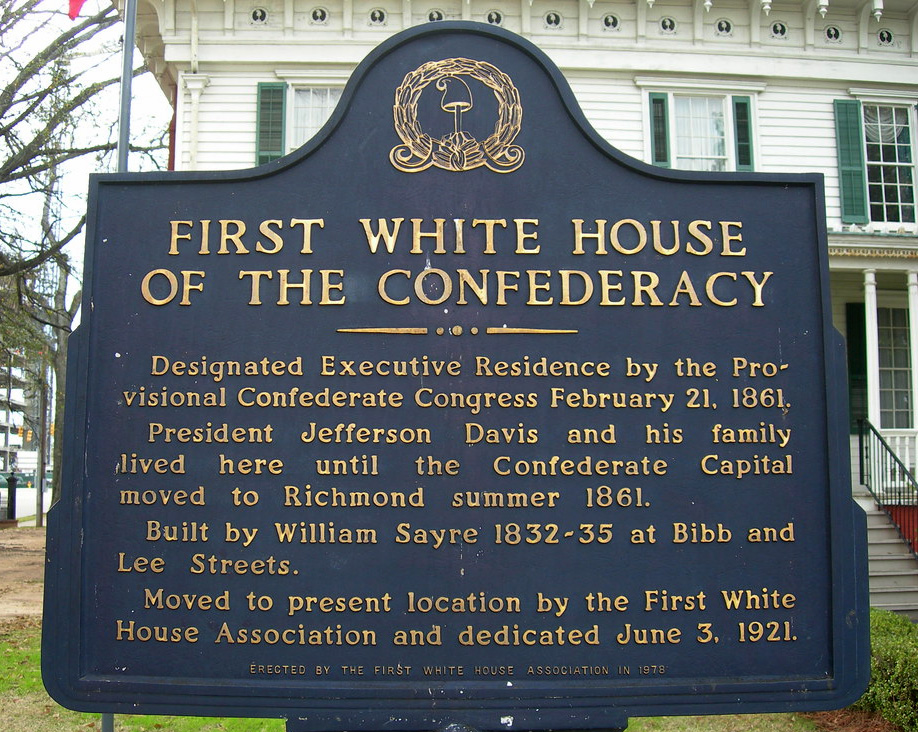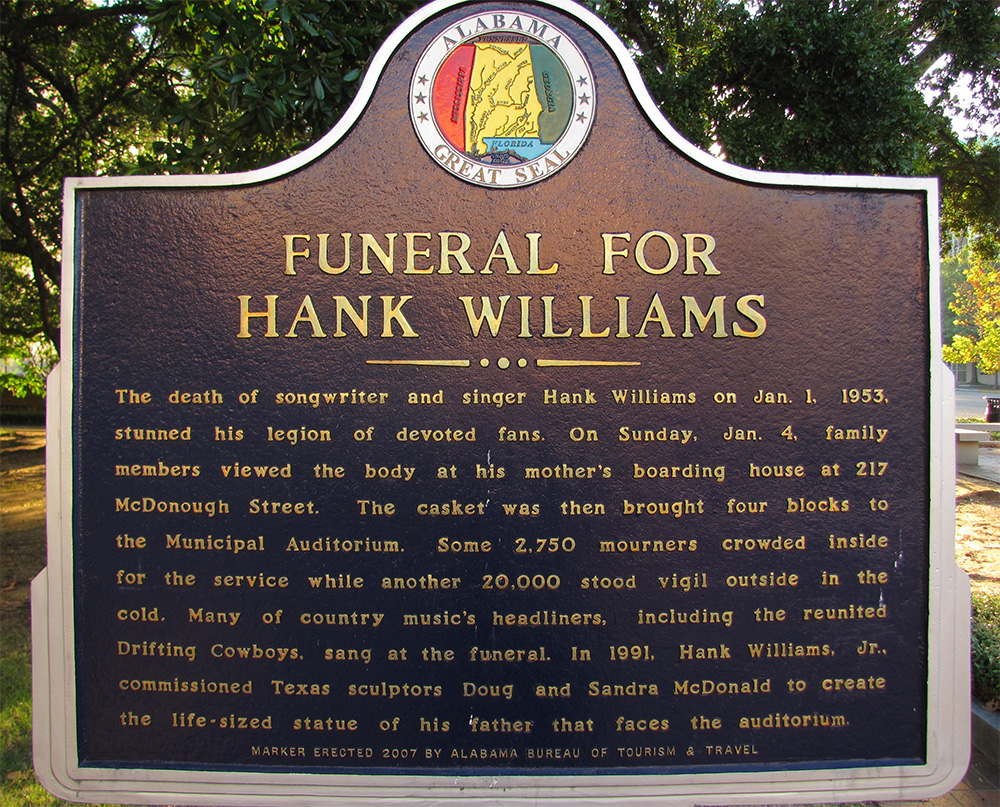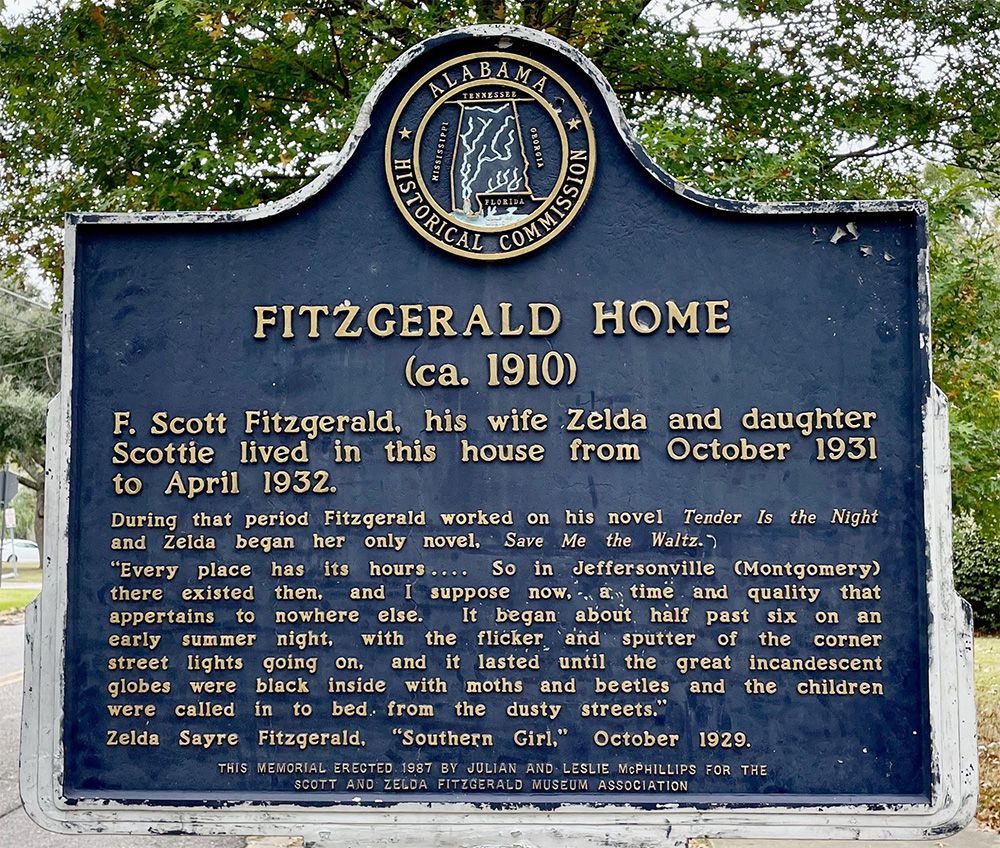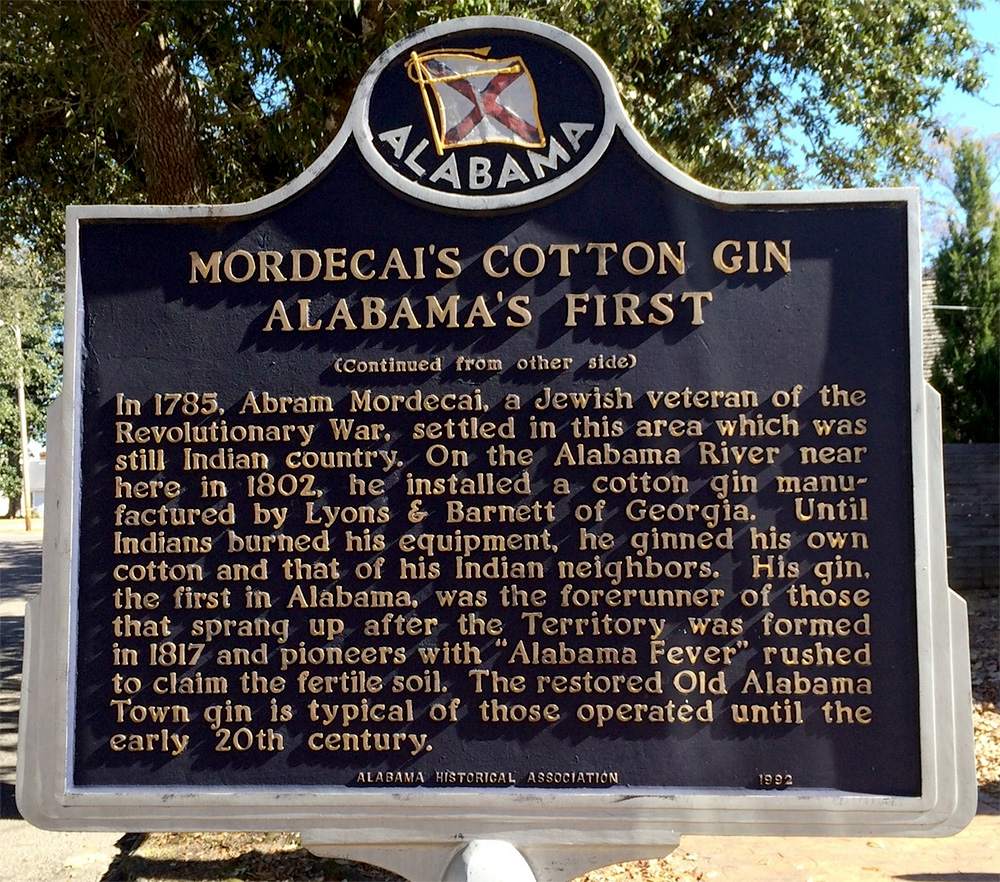Exhibitions
HISTORICAL MARKERS: SIGNS OF HISTORY
April 15, 2024 through September 5, 2024
9 AM to 4 PM Monday through Thursday
Montgomery, Alabama, is one of the most historically marked cities in the United States. Historical markers throughout the city and county help tell the story of its rich history, from the Civil War to Civil Rights, the Creek Indians, and the Confederacy, with innovators, pioneers, leaders, commerce, culture, and more. Historical markers provide pieces of the past—the stories, people, and occurrences.
This exhibition, Historical Markers: Signs of History, features five historical markers found in Montgomery, plus connected opportunities to inspire exploration. We hope you will use the reference material to plot your tour. Please share your experiences and insights by tagging us on Facebook. Together, we will preserve the past for the future.
Montgomery Theatre | The First White House | Hank Williams | Fitzgerald Home | Abram Mordecai and the Cotton Gin
Explore more area historical markers here:
Originally standing from 1860 through early 1900, the Montgomery Theatre auditorium seated as many as 900 audience members and welcomed traveling performing groups from across the county. The first lessee and manager was Matthew Canning, who opened the theater with his troupe of actors on October 22, 1860, featuring the play School for Scandal. Many famous actors of the day performed at the theater, including John Wilkes Booth, who appeared in several productions before the start of the war.
After 47 years of operation, the Montgomery Theatre was closed on November 13, 1907. Following the close of the theatre, the interior of the building was remodeled to create the Webber department store, which lasted until the 1990s, with the exterior retaining its original construction. A few years later, a foundation purchased the building and retained the space until 2010, when they sold it to a developer planning to restore the structure and create retail and housing space. Unfortunately, the structure suffered a partial collapse in June of 2014; the owner of the building didn’t have the funds to continue work, and ownership of the building reverted to the city of Montgomery in December of 2014. The city tried to find a buyer to continue the restoration, offering to sell for $1 to any developers who would restore it. Ultimately, the city could not find a buyer, so it was demolished in 2016-2017.
The First White House of the Confederacy
Marker and Museum: 644 Washington Ave, Montgomery, Alabama
Hours: 8 AM to 3:30 PM, Monday through Saturday
Learn more: www.thefirstwhitehouse.com or Facebook or Instagram
Mr. William Sayre built this 1834 Italianized home as his primary residence. Sayre was an early City Councilman who helped build the railroad linking Montgomery with Mobile. Prior to 1861, consecutive owners were instrumental in building the gas company, the icehouse, Montgomery’s banking system, and one of Montgomery’s Iron Works factories. These owners helped modernize Montgomery into a bustling Antebellum city. In the spring of 1861, the newly formed Confederate government rented this home as an executive residence for President Jefferson Davis and his young family. While the capital of the Confederate States of America was established in Montgomery, this house remained the First White House of the Confederacy until the capital moved to Richmond, Virginia, in May 1861. Today, The First White House of the Confederacy houses many of Davis’s personal belongings and original period-specific furniture.
Hank Williams
Funeral Marker: 103 North Perry Street, Montgomery, Alabama
Gravesite Memorial: Oakwood Cemetery Annex, 1304 Upper Wetumpka Road, Montgomery, Alabama
Museum: 118 Commerce St, Montgomery, Alabama
Hours: 9 AM to 4 PM, Monday through Friday, and 10 AM to 4 PM on Saturday
Learn more: www.thehankwilliamsmuseum.net or Facebook or Instagram
Hank Williams (1923-1953), dubbed the “Hillbilly Shakespeare,” had a successful career as a songwriter and singer. His music influenced many, and it continues to inspire. For his memorial on Sunday, January 4, friends and family gathered in Montgomery at his mother’s boarding house on McDonough Street. Over 20,000 mourners stood vigil outside Montgomery Municipal Auditorium during his service, with nearly 3,000 attending, and many county musicians performed and paid their respects.
The Hank Williams Museum, featuring the most complete collection of Hank Williams memorabilia, opened in 1999 and will celebrate its 25th year in September 2024. “Spending a day at the Hank Williams Museum is like spending a day at a shrine to a legend.” –a fan.
Fitzgerald Home
Marker and Museum: 919 Felder Avenue, Montgomery, Alabama
Hours: 10 AM to 3 PM, Thursday to Sunday, and Wednesdays by appointment. Private school or group tours on Wednesdays by appointment.
Learn more: www.thefitzgeraldmuseum.org or Facebook or Instagram
The Fitzgerald home on Felder Avenue was built between 1905 and 1910 as a single-family home and subdivided into apartments when Scott and Zelda moved out in 1932. In 1986, it was set to be demolished when the McPhillips family personally purchased the home and established the Scott and Zelda Fitzgerald Museum. F. Scott Fitzgerald, his wife Zelda, and daughter Scottie wintered in the house from October 1931 to April 1932. During this period, Fitzgerald worked on his novel Tender Is The Night, and Zelda began her only novel, Save Me the Waltz. The Scott and Zelda Fitzgerald Museum is the only museum in the world dedicated to the lives and legacies of Scott and Zelda with a mission to preserve their histories and artifacts while continuing their legacies by promoting understanding and education in the literary arts, fine arts, music, and dance. The home also has two Airbnb suites, inviting guests to experience early 20th-century nostalgia.
Abram Mordecai and the Cotton Gin at Old Alabama Town
Marker: 454 Columbus Street, Montgomery, Alabama
Cotton Gin: Starting point, Lucas Tavern, 310 North Hull Street, Montgomery, Alabama
Hours: 10 AM to 4 PM, Wednesday through Saturday,
Learn more: www.landmarksfoundation.com or Touroldalabamatown.com or Facebook, Instagram, or Twitter
One of the first settlers in Montgomery County was Abram Mordecai, who was born in Pennsylvania in 1755. Mordecai had served in the American Revolution before settling in Georgia. By 1789, Mordecai was a trader among the Creeks in the areas that would become Montgomery County. His trading post and home were located two miles west of Line Creek at the Coosa and Tallapoosa Rivers, merging along a trading path that was part of the Federal Road. Mordecai built the first cotton gin in Alabama, constructed to process cotton grown by the local Creeks and brokered by Mordecai.
Landmarks Foundation of Montgomery administers Old Alabama Town, a collection of 25 historic house museums that interpret life in central Alabama in the 19th and early 20th centuries. One of the main features is the Old Alabama Town Cotton Gin, a two-stand machine manufactured by Continental Gin Company in Prattville, Alabama. The Gin interprets the importance of cotton culture on the economy and the lives of so many Alabamians.
Historical marker photos courtesy of Mark Hilton via the Historical Marker Database.

